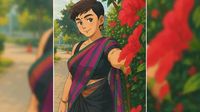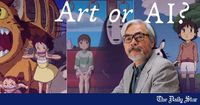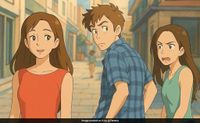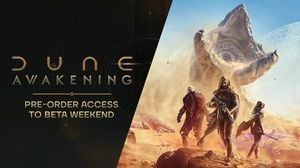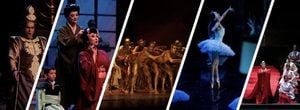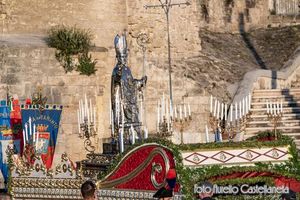Over the past few months, a peculiar trend has emerged on social media and in digital marketing: brands using AI-generated art that mimics the iconic animation style of Studio Ghibli. This legendary Japanese studio, co-founded by Hayao Miyazaki, is celebrated for its hand-drawn, dreamlike aesthetic, showcased in beloved films like 'Spirited Away' and 'My Neighbor Totoro'. The trend gained momentum as AI tools like OpenAI’s DALL·E and MidJourney made it increasingly simple to replicate Ghibli’s whimsical landscapes, soft colors, and charming characters.
Brands quickly jumped on the bandwagon, employing AI-generated Ghibli-style visuals for advertisements, social media posts, and promotional campaigns. The appeal was evident: Ghibli’s art evokes nostalgia, warmth, and universal storytelling—elements perfect for engaging a viral audience. However, this trend soon faced significant backlash. Critics argued that these AI-generated images violated copyright and ethical boundaries, particularly since Miyazaki himself has been vocal about his disdain for AI replacing human creativity.
The controversy reached a tipping point when OpenAI announced restrictions on generating images in the style of living artists, including Miyazaki. This decision came in response to widespread criticism that AI companies profited from copyrighted works without permission. The debate raises bigger questions: Where is the line between inspiration and infringement? Can brands ethically capitalize on AI trends tied to beloved artists?
Various brands have adopted this trend in creative ways. For instance, Zomato posted an AI-generated image of a Ghibli-style meal, captioning it “ChatGPT cooked”—a playful nod to AI’s role in the trend. Wendy’s celebrated its expansion in India by sharing a Ghibli-esque illustration of a fantasy food landscape, while Swiggy Instamart joined in with a post captioned “keeping up with the trend #studioghibli,” featuring an AI-generated cozy marketplace scene.
Other brands, such as ZEE TV, transformed a scene from the movie 'Rockstar' into a Studio Ghibli-style image, while Zepto linked its quick delivery service to AI’s instant image generation through an AI Ghibli-style ad. Britannia also jumped on the trend, using AI to create a Ghibli-inspired ad labeled “Creative Visualisation,” raising questions about transparency in AI use. Swiggy humorously imagined Indian desserts in a Ghibli-style Japan, blending cultural nostalgia with AI-generated imagery. Wakefit referenced Ghibli’s emotional storytelling in a farewell-themed post, and Netflix India compared Bollywood star Shah Rukh Khan to a Ghibli character, merging two fandoms.
However, not everyone is on board with this trend. Many fans of Studio Ghibli have expressed their disapproval, arguing that the use of AI-generated art diminishes the value of traditional craftsmanship. On platforms like X (formerly Twitter), users have voiced concerns about the ethical implications of using AI to replicate the work of living artists. Some have even called for legal action against those profiting from this trend, hoping for Studio Ghibli to sue “everyone involved.”
Critics have pointed out that AI tools trained on copyrighted art should not be allowed to replicate distinct styles. The backlash intensified when AI-generated images were used to depict controversial historical events, such as the 9/11 attacks and the demolition of the Babri Masjid in Ayodhya. This use of Ghibli-style art to portray such sensitive subjects has sparked outrage, with users questioning the morality of making light of tragic events.
OpenAI has encouraged the 'Ghiblification' experiments online, with CEO Sam Altman even changing his X profile picture to a Ghibli-style portrait. He stated, "The gpt-4o update is GOOD,” reflecting the company's support for this trend. However, OpenAI has also implemented measures to prevent users from generating images in the style of living artists, claiming to take a “conservative approach” to mimic the aesthetics of individual artists.
Meanwhile, Hayao Miyazaki has been vocal about his disdain for AI-generated animation. In a 2016 interview, he condemned the technology, saying it was “an insult to life itself.” He expressed that AI lacks the ability to understand real human emotions, which are essential to creating meaningful art. “I can’t watch this stuff and find [it] interesting,” he said. “Whoever creates this stuff has no idea what pain is whatsoever. I am utterly disgusted.”
The rise of AI-generated Ghibli-style images has sparked a broader conversation about the future of animation and the role of technology in creative fields. While some view AI as a tool for enhancing artistic expression, others fear it could lead to a decline in traditional craftsmanship. As AI continues to evolve, the delicate balance between inspiration and imitation becomes increasingly important.
In a world where technology is rapidly changing the landscape of art and creativity, the essence of what makes Studio Ghibli’s work so special remains intact. The studio's films are renowned for their detailed frame-by-frame animation, where every brushstroke evokes a depth of feeling that is difficult for an algorithm to replicate. Miyazaki’s art is more than just entertainment; it serves as a portal to other realms where human emotions, environmental awareness, and youthful wonder coexist.
The Ghibli AI trend ultimately highlights both the creative potential and ethical pitfalls of AI in marketing. While brands enjoy viral moments and engage audiences through nostalgic visuals, the backlash serves as a reminder that even in the age of AI, artistic integrity still matters. As OpenAI’s restrictions demonstrate, the line between inspiration and exploitation is thinner than ever—and audiences are watching closely.

